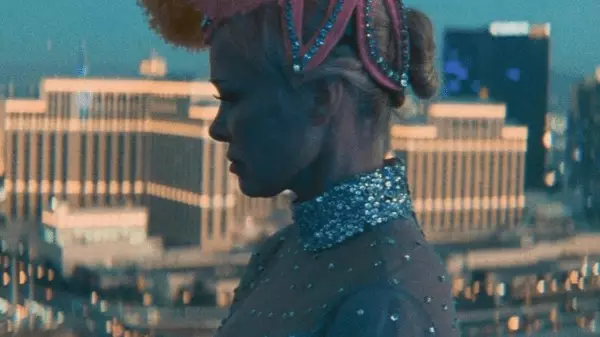Pamela Anderson is making her comeback onto the silver screen in a role that deeply resonates with her own life experiences. The anticipation surrounding her performance in Gia Coppola’s latest film, *The Last Showgirl*, reflects a compelling narrative of resilience and identity, reminiscent of iconic figures like Marilyn Monroe. As the movie gears up for its release on December 13, the exploration of a layered protagonist struggling with her self-worth and relevance in a showbiz landscape provides a fascinating lens through which audiences can view Anderson’s journey and artistic evolution.
Anderson’s character, Shelley, embodies the dichotomy of a celebrated showgirl teetering on the precipice of obsolescence. With her longstanding show closing after nearly four decades and facing discouragement about her aging, Shelley represents not just a personal struggle but a broader commentary on how society perceives aging women in entertainment. Coppola’s casting choice is particularly significant, as she sees Anderson as a contemporary echo of Monroe—both women are symbolically entwined in the cultural fabric of their respective eras, epitomizing the challenges of female visibility, especially in an industry that prioritizes youth and beauty.
In her own way, Anderson has articulated the deep personal connection she feels to Shelley. During a panel discussion at Deadline’s TIFF Studio, Anderson expressed that the role speaks to her on multiple levels, connecting her experiences as a mother with the pressures of a superficial entertainment industry. “Most of my career has been about the external,” she stated, which underscores the often anaesthetized portrayal of women living in the public eye. Through *The Last Showgirl*, Anderson finds an opportunity not only to reclaim her narrative but also to explore the inner complexities that accompany female stardom.
Coppola’s assertion that Anderson is “the Marilyn of our time” further amplifies the notion that the actress’s struggles extend beyond the screen, highlighting her artistic ambitions that have historically been overshadowed by public perception. In this regard, Coppola identifies not only Anderson’s potential as a gifted performer but also her intellectual depth, suggesting that her art goes far beyond the physical allure typically associated with her career.
Through the lens of *The Last Showgirl*, both Anderson and Coppola endeavor to dismantle the stereotypes that have long plagued women in entertainment. By focusing on Shelley’s journey of reconnection—with her daughter and with her own ambitions—this film seeks to illuminate the often-unseen battles that women face behind the glitz and glam of showbiz. The film invites viewers to engage with a narrative that champions empowerment through artistry, revealing the character’s multi-dimensionality and her fight against an industry that frequently sidelines women of a certain age.
As *The Last Showgirl* prepares for its release, it is clear that Anderson’s comeback signifies more than just a return to acting. It symbolizes a reclaiming of agency, offering audiences a refreshing perspective on the life and struggles of women in performance arts. The intersection of Anderson’s life experiences with Shelley’s storyline promises to create a profound impact that resonates with viewers, perhaps prompting them to reconsider the value of artistry, resilience, and female solidarity in contemporary culture.

Leave a Reply